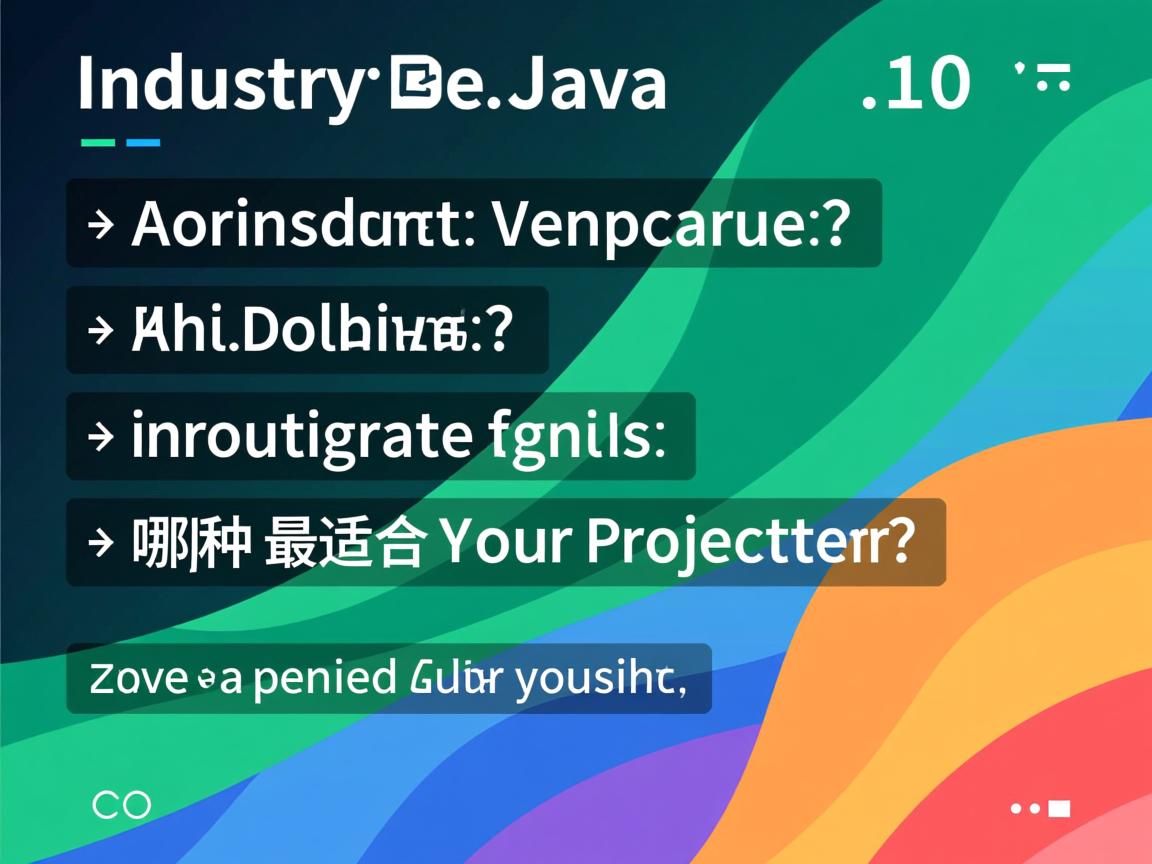java怎么同时起多个线程
- 后端开发
- 2025-08-09
- 38
start()方法启动多个线程。,“`java,Thread t1 = new Thread(() -> { / 任务代码 / });,Thread t2 = new Thread(() -> { / 任务代码 / });,t1.start();,t2.
Java中,同时启动多个线程可以通过多种方式实现,以下是几种常见的方法及其详细解释:
继承Thread类
通过继承Thread类并重写其run()方法,可以创建一个新的线程,通过调用start()方法来启动线程。
public class MyThread extends Thread {
@Override
public void run() {
System.out.println("Thread " + Thread.currentThread().getId() + " is running");
}
public static void main(String[] args) {
for (int i = 0; i < 5; i++) {
MyThread thread = new MyThread();
thread.start();
}
}
}
实现Runnable接口
通过实现Runnable接口并重写其run()方法,可以将任务传递给Thread对象来启动线程。
public class MyRunnable implements Runnable {
@Override
public void run() {
System.out.println("Thread " + Thread.currentThread().getId() + " is running");
}
public static void main(String[] args) {
for (int i = 0; i < 5; i++) {
Thread thread = new Thread(new MyRunnable());
thread.start();
}
}
}
使用ExecutorService
ExecutorService是Java并发库中的一个接口,它提供了一种更高级别的线程管理方式,通过ExecutorService,可以方便地提交任务并控制线程的生命周期。

import java.util.concurrent.ExecutorService;
import java.util.concurrent.Executors;
public class ExecutorExample {
public static void main(String[] args) {
ExecutorService executor = Executors.newFixedThreadPool(5);
for (int i = 0; i < 5; i++) {
executor.submit(() -> {
System.out.println("Thread " + Thread.currentThread().getId() + " is running");
});
}
executor.shutdown();
}
}
使用ForkJoinPool
ForkJoinPool是Java并发库中的一个特殊类型的ExecutorService,它适用于递归任务的并行执行。
import java.util.concurrent.ForkJoinPool;
import java.util.concurrent.RecursiveAction;
public class ForkJoinExample {
static class MyTask extends RecursiveAction {
@Override
protected void compute() {
System.out.println("Thread " + Thread.currentThread().getId() + " is running");
}
public static void main(String[] args) {
ForkJoinPool pool = new ForkJoinPool();
for (int i = 0; i < 5; i++) {
pool.invoke(new MyTask());
}
pool.shutdown();
}
}
}
使用CompletableFuture
CompletableFuture是Java 8引入的一个类,用于异步编程,它可以方便地处理多个并发任务。
import java.util.concurrent.CompletableFuture;
public class CompletableFutureExample {
public static void main(String[] args) {
for (int i = 0; i < 5; i++) {
CompletableFuture.runAsync(() -> {
System.out.println("Thread " + Thread.currentThread().getId() + " is running");
});
}
}
}
使用Parallel Streams
Java 8引入的并行流(Parallel Streams)可以自动将任务分配到多个线程中执行。

import java.util.List;
import java.util.Arrays;
public class ParallelStreamExample {
public static void main(String[] args) {
List<Integer> list = Arrays.asList(1, 2, 3, 4, 5);
list.parallelStream().forEach(i -> {
System.out.println("Thread " + Thread.currentThread().getId() + " is processing " + i);
});
}
}
使用Phaser
Phaser是Java 7引入的一个同步工具,用于控制多个线程的执行阶段。
import java.util.concurrent.Phaser;
public class PhaserExample {
public static void main(String[] args) {
Phaser phaser = new Phaser(1);
for (int i = 0; i < 5; i++) {
new Thread(() -> {
phaser.arriveAndAwaitAdvance();
System.out.println("Thread " + Thread.currentThread().getId() + " is running");
phaser.arriveAndDeregister();
}).start();
}
}
}
使用CountDownLatch
CountDownLatch是一个同步工具类,允许一个或多个线程等待一组其他线程完成操作。
import java.util.concurrent.CountDownLatch;
public class CountDownLatchExample {
public static void main(String[] args) {
CountDownLatch latch = new CountDownLatch(5);
for (int i = 0; i < 5; i++) {
new Thread(() -> {
System.out.println("Thread " + Thread.currentThread().getId() + " is running");
latch.countDown();
}).start();
}
try {
latch.await();
System.out.println("All threads are finished");
} catch (InterruptedException e) {
e.printStackTrace();
}
}
}
使用CyclicBarrier
CyclicBarrier是一个同步工具类,允许一组线程互相等待,直到所有线程都达到某个状态。
import java.util.concurrent.BrokenBarrierException;
import java.util.concurrent.CyclicBarrier;
public class CyclicBarrierExample {
public static void main(String[] args) {
CyclicBarrier barrier = new CyclicBarrier(5);
for (int i = 0; i < 5; i++) {
new Thread(() -> {
try {
barrier.await();
System.out.println("Thread " + Thread.currentThread().getId() + " is running");
} catch (InterruptedException | BrokenBarrierException e) {
e.printStackTrace();
}
}).start();
}
}
}
使用Semaphore
Semaphore是一个同步工具类,用于控制对资源的访问。

import java.util.concurrent.Semaphore;
public class SemaphoreExample {
public static void main(String[] args) {
Semaphore semaphore = new Semaphore(5);
for (int i = 0; i < 5; i++) {
new Thread(() -> {
try {
semaphore.acquire();
System.out.println("Thread " + Thread.currentThread().getId() + " is running");
semaphore.release();
} catch (InterruptedException e) {
e.printStackTrace();
}
}).start();
}
}
}
FAQs
Q1: 什么是线程安全?
A1: 线程安全是指多个线程在访问共享资源时,不会因为竞争条件而导致数据不一致或其他问题,在Java中,可以通过同步机制(如synchronized关键字、Lock接口等)来保证线程安全。
Q2: 如何选择合适的线程池?
A2: 选择合适的线程池取决于具体的应用场景,如果需要处理大量短时间的任务,可以使用CachedThreadPool;如果需要处理固定数量的长时间任务,可以使用FixedThreadPool;如果需要处理异步任务,可以使用SingleThreadExecutor。















